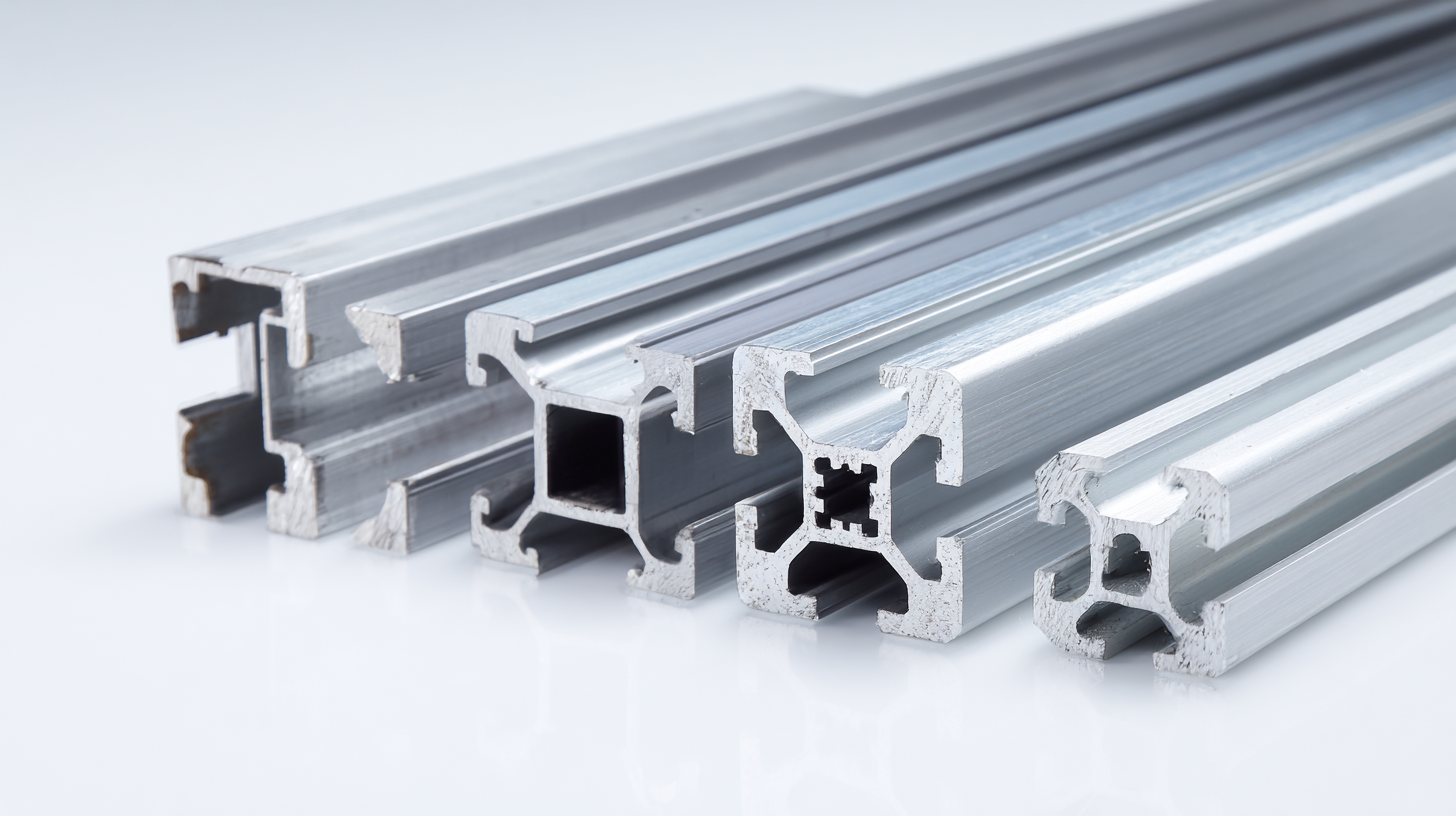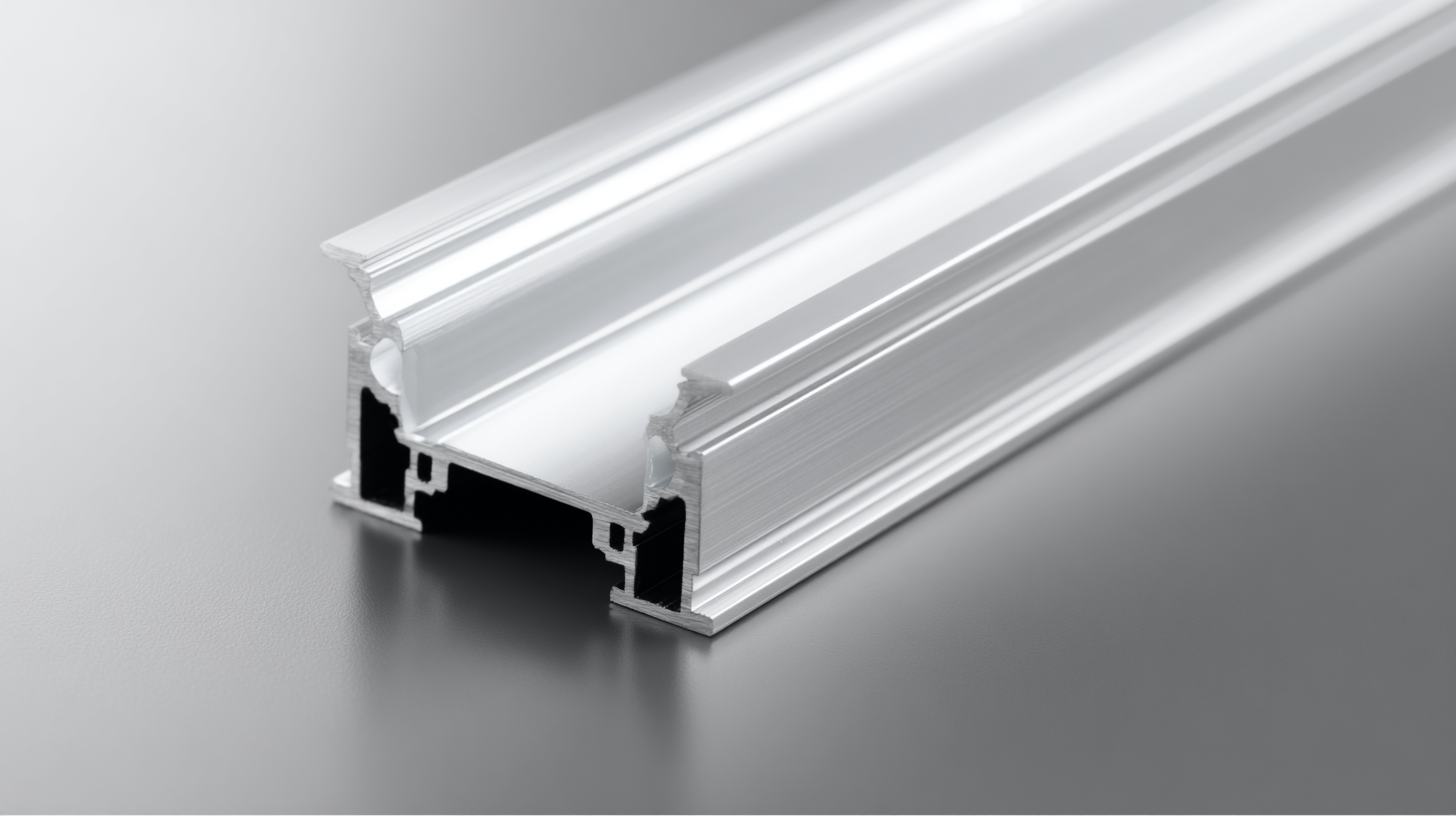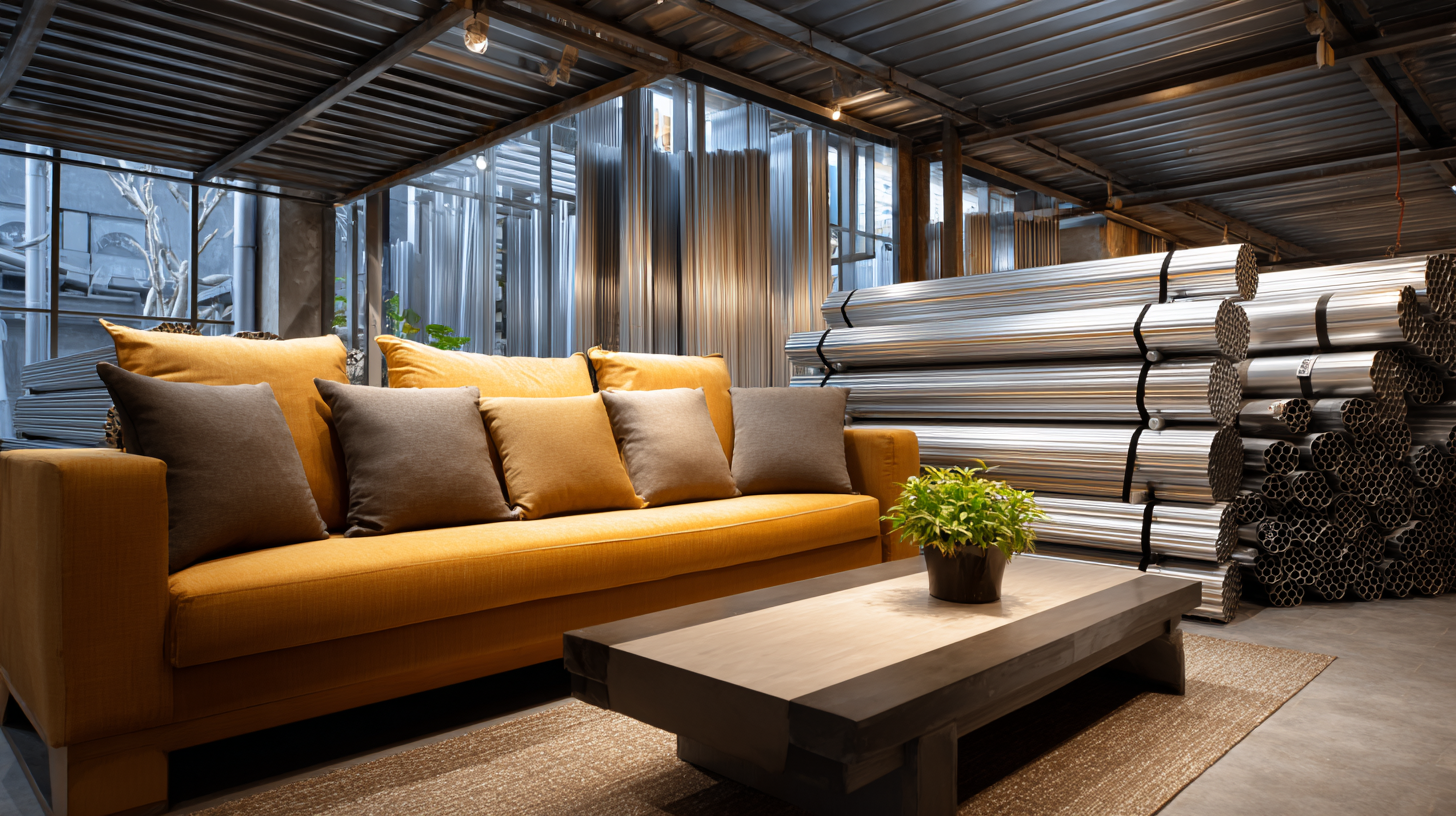As the global demand for high-quality furniture continues to rise, manufacturers are increasingly turning to innovative materials that enhance both aesthetics and functionality. One such material making waves in the industry is Furniture Aluminum Profiles, known for their durability, lightweight nature, and versatility. In this blog, we will explore the immense potential of these profiles sourced from China, which have gained recognition in global markets for their excellence in manufacturing. With a focus on design efficiency and sustainability, Furniture Aluminum Profiles offer endless possibilities for furniture designers and manufacturers alike. From residential to commercial applications, the integration of these profiles not only elevates the visual appeal of furniture but also ensures longevity and structural integrity. Join us as we delve into the key features, benefits, and trends surrounding Furniture Aluminum Profiles, and discover why they are becoming a preferred choice in the ever-evolving furniture landscape.

In the realm of furniture manufacturing, aluminum profiles have become increasingly significant due to their versatility and performance. These profiles are not just structural components; they also enhance aesthetic appeal and functionality. Various types of aluminum profiles are utilized, including extruded profiles, curved profiles, and custom shapes designed for specific applications, allowing manufacturers to innovate and create unique furniture solutions. The global aluminum profiles market is projected to grow significantly, driven by rising demand from the furniture sector, which is anticipated to surpass $1 trillion by 2029.
The innovative potential of aluminum profiles is exemplified by their application in creating lightweight yet robust structures, acknowledged for their high stiffness and aerodynamic advantages. Recently, a shift towards using advanced sliding systems has highlighted the trend toward seamless integration of technology and design within furniture. This trend emphasizes the importance of quality and affordability, ensuring that manufacturers can meet the diverse needs of global markets. Furthermore, with tariffs affecting aluminum imports, manufacturers are exploring local production options to remain competitive, paving the way for growth in regions such as Asia and the EU.
When it comes to manufacturing high-quality furniture, aluminum profiles have emerged as a favorite choice in both durability and aesthetics. These profiles are lightweight yet incredibly strong, offering an excellent balance between functionality and design. One of the key characteristics of aluminum furniture profiles is their resistance to corrosion and rust, which makes them suitable for both indoor and outdoor applications. This durability ensures that furniture retains its integrity and appearance over time, even in challenging environments.
Another significant attribute of aluminum profiles is their versatility in design. Manufacturers can easily extrude aluminum into various shapes and sizes, allowing for innovative designs that cater to diverse consumer preferences. Whether it's a sleek, modern look or a more traditional aesthetic, aluminum profiles can be clad in different finishes and colors, enhancing both the visual appeal and cohesion of any furniture piece. This adaptability not only meets the demands of modern interior design but also reflects a commitment to sustainability with recyclable materials. As global markets increasingly seek quality and aesthetic excellence, aluminum furniture profiles continue to stand out as a superior choice.
| Profile Type | Typical Use | Weight (kg/m) | Durability (Years) | Surface Finish | Color Options |
|---|---|---|---|---|---|
| Rectangular Tube | Table Legs | 2.5 | 10 | Powder Coated | Black, White, Silver |
| Square Tube | Chair Frames | 2.2 | 12 | Brushed Finish | Natural, Anodized |
| Angle Profile | Shelving Supports | 3.0 | 15 | Anodized | Silver, Bronze |
| Flat Bar | Tabletop Frames | 1.8 | 10 | Powder Coated | White, Black |
| T-Slot Profile | Modular Furniture | 4.0 | 20 | Natural Anodized | Various Custom Colors |
The global furniture market is witnessing a transformative shift with the rising demand for aluminum furniture profiles. As consumers become more environmentally conscious, manufacturers are increasingly turning to sustainable materials like aluminum, recognized for its durability, lightweight properties, and recyclability. This trend is bolstered by a growing appreciation for modern design aesthetics, where aluminum profiles seamlessly integrate into various furniture styles, enhancing their appeal in global markets.
Additionally, the construction industry's shift towards aluminum is propelling this demand further. With a projected growth rate of 9% in aluminum utilization for building and construction by 2027, driven by its application in commercial buildings and clean energy projects, the furniture sector stands to benefit significantly. This confluence of trends highlights an exciting opportunity for manufacturers to innovate and cater to a market that values both sustainability and style, positioning aluminum furniture profiles as a viable option for the future.

Aluminum profiles have become a vital component in furniture design, offering versatility and functionality across various sectors. In the residential furniture market, these profiles are favored for their lightweight nature and modern aesthetic, enabling designers to create sleek, minimalist pieces that do not compromise on strength. Whether it’s for elegant dining tables or innovative shelving units, aluminum profiles provide the durability and style needed to enhance any home environment.

In commercial settings, the application of aluminum profiles is equally impressive. Office furniture incorporating aluminum elements promotes a clean, organized workspace while ensuring longevity. These profiles are used in everything from modular desks to partition systems, allowing for flexible configurations that can adapt to changing workstyles. Additionally, in the hospitality sector, aluminum profiles contribute to the creation of functional yet stylish furnishings that can withstand high usage while maintaining an upscale appearance, making them perfect for hotels and restaurants.
When it comes to furniture production, the choice of material significantly affects durability, aesthetics, and overall performance.
Aluminum has emerged as a frontrunner in the furniture manufacturing landscape, especially when compared to traditional materials like wood and plastic. Aluminum profiles offer unique benefits, including
lightweight design,
resistance to corrosion, and
ease of maintenance, making them particularly appealing for both indoor and outdoor furniture.
Tip: Consider the environmental impact of your material choice.
Aluminum is highly recyclable, which can minimize your carbon footprint when compared to other materials. This not only supports sustainable practices but also responds to the growing consumer demand for eco-friendly products.
Additionally, aluminum's versatility in design allows for
innovative and modern furniture solutions that can cater to diverse market preferences. Unlike wood, which can warp or crack over time, aluminum maintains its structural integrity even in challenging climates.
This makes it a reliable choice for consumers looking for longevity in their purchases.
Tip: When selecting aluminum furniture, pay attention to the finishing. Anodized or powder-coated surfaces not only enhance the visual appeal but also improve the durability of the material against scratches and fading.




